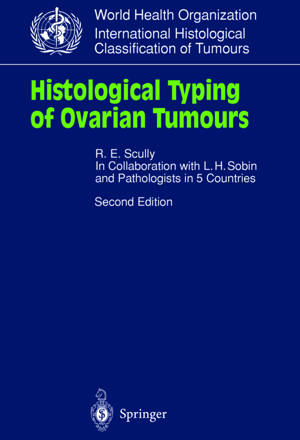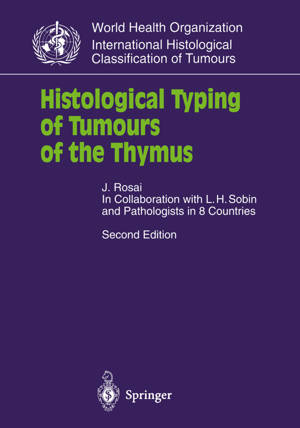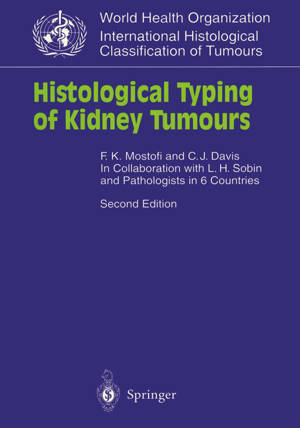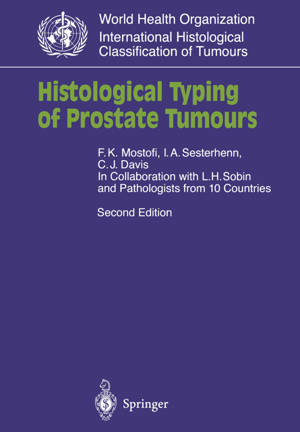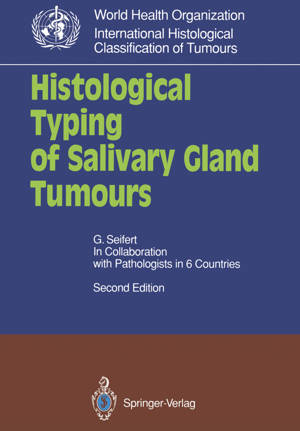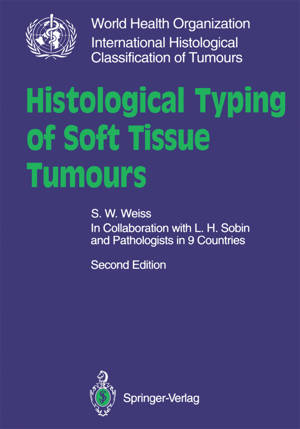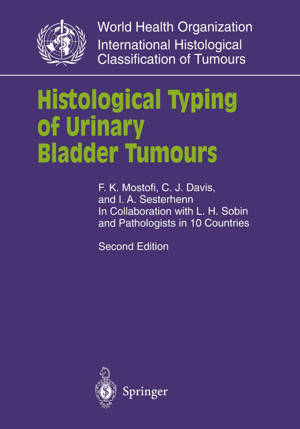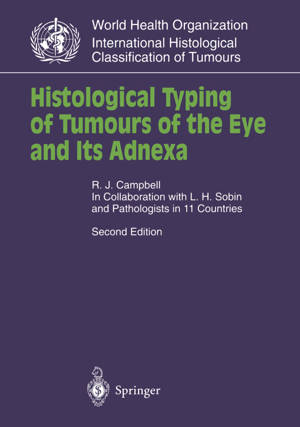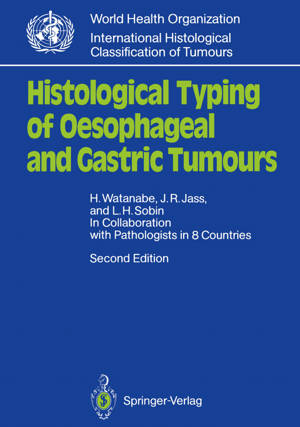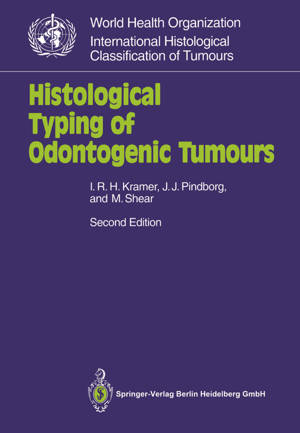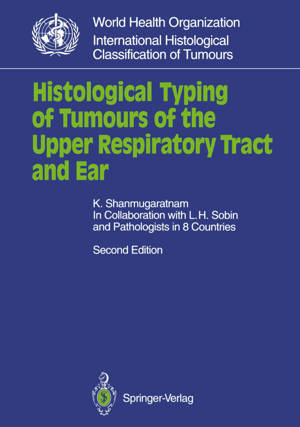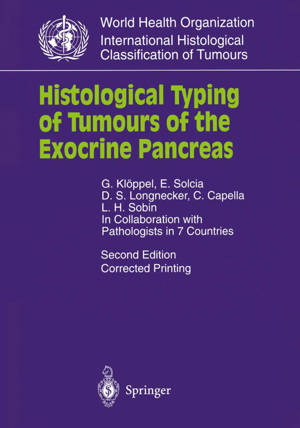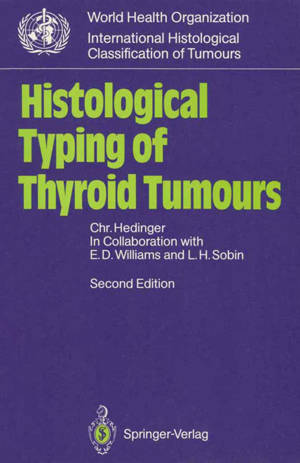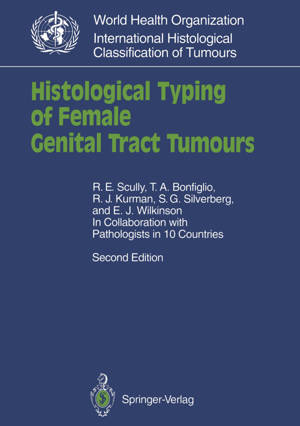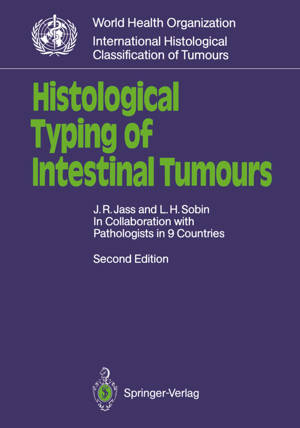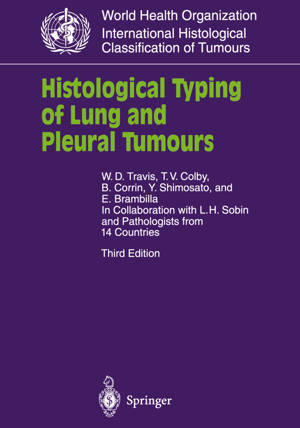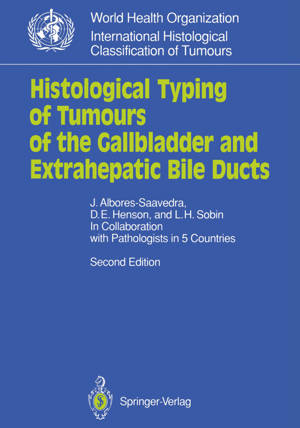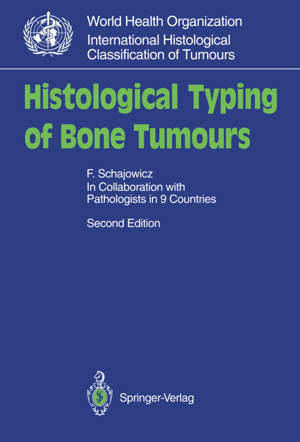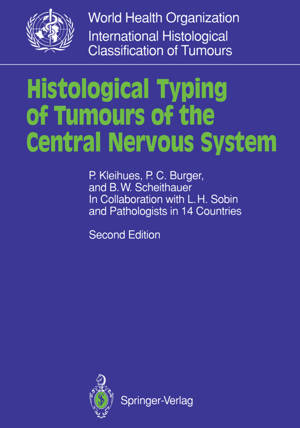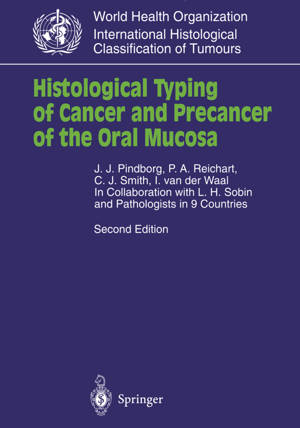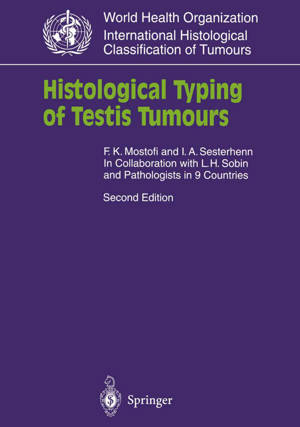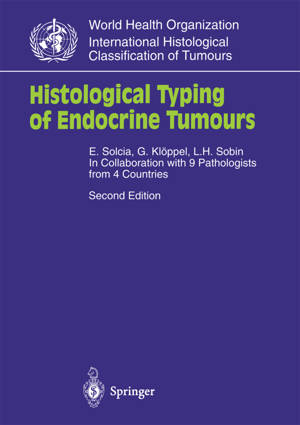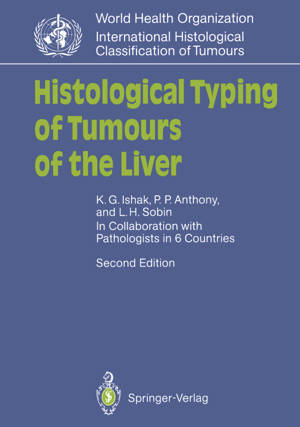
- Retrait gratuit dans votre magasin Club
- 7.000.000 titres dans notre catalogue
- Payer en toute sécurité
- Toujours un magasin près de chez vous
- Retrait gratuit dans votre magasin Club
- 7.000.0000 titres dans notre catalogue
- Payer en toute sécurité
- Toujours un magasin près de chez vous
Résultats pour "Who. World Health Organization. International Histological C"
-
Histological Typing of Ovarian Tumours
Robert Scully
- Livre broché | Anglais | Who. World Health Organization. International Histological C
- The second edition of this book presents an internationally approved classification of ovarian tumours, including a number of entities that were not i... Savoir plus
52,95 €Livraison sous 1 à 4 semaines52,95 €Livraison sous 1 à 4 semaines -
Histological Typing of Tumours of the Thymus
Juan Rosai
- Livre broché | Anglais | Who. World Health Organization. International Histological C
- This classification represents a project aimed at bringing together the variety of ways thymic epithelial neoplasms have been classified. It focuses o... Savoir plus
52,95 €Livraison sous 1 à 4 semaines52,95 €Livraison sous 1 à 4 semaines -
Histological Typing of Kidney Tumours
F K Mostofi, C J Jr Davis
- Livre broché | Anglais | Who. World Health Organization. International Histological C
- This classification is based primarily on the microscopic charac teristics of tumours and, therefore, is concerned with morpho logically identifiable ... Savoir plus
52,95 €Livraison sous 1 à 4 semaines52,95 €Livraison sous 1 à 4 semaines -
Histological Typing of Prostate Tumours
K F Mostofi, I a Sesterhenn, C J Jr Davis
- Livre broché | Anglais | Who. World Health Organization. International Histological C
- This classification is based primarily on the microscopic characteris- tics of tumours and therefore is concerned with morphologically identifiable ce... Savoir plus
52,95 €Livraison sous 1 à 4 semaines52,95 €Livraison sous 1 à 4 semaines -
Histological Typing of Salivary Gland Tumours
Gerhard Seifert
- Livre broché | Anglais | Who. World Health Organization. International Histological C
- The second edition of this book is more extensive and detailed than the previous edition. New technical methods have increased our understanding of ma... Savoir plus
52,95 €Livraison sous 1 à 4 semaines52,95 €Livraison sous 1 à 4 semaines -
Histological Typing of Skin Tumours
P J Heenan, D Elder, L H Sobin
- Livre broché | Anglais | Who. World Health Organization. International Histological C
- Although this second edition retains the concise format of the first edition, the number of tumours described has increased considerably, especially i... Savoir plus
105,45 €Livraison sous 1 à 4 semaines105,45 €Livraison sous 1 à 4 semaines -
Histological Typing of Soft Tissue Tumours
S W Weiss
- Livre broché | Anglais | Who. World Health Organization. International Histological C
- The first edition of Histological Typing of Soft Tissue Tumours, pub- lished in 1969, represented a major step in the standardization of nomen- clatur... Savoir plus
158,45 €Livraison sous 1 à 4 semaines158,45 €Livraison sous 1 à 4 semaines -
Histological Typing of Urinary Bladder Tumours
F K Mostofi, C J Jr Davis, I a Sesterhenn
- Livre broché | Anglais | Who. World Health Organization. International Histological C
- The 1973 WHO classification of bladder tumours anticipated a probable need for eventual revision of the criteria for diagnosing papillary and flat bla... Savoir plus
52,95 €Livraison sous 1 à 4 semaines52,95 €Livraison sous 1 à 4 semaines -
Histological Typing of Tumours of the Eye and Its Adnexa
R Jean Campbell
- Livre broché | Anglais | Who. World Health Organization. International Histological C
- This second edition is the result of a collaborative effort of ophthalmic pathologists from 11 countries and is more extensive and detailed than its p... Savoir plus
52,95 €Livraison sous 1 à 4 semaines52,95 €Livraison sous 1 à 4 semaines -
Histological Typing of Oesophageal and Gastric Tumours
Hidenobu Watanabe, Jeremy R Jass, Leslie H Sobin
- Livre broché | Anglais | Who. World Health Organization. International Histological C
- This classic WHO reference has been updated in a new edition; it provides a standardized set of terms and definitions which facilitate national and in... Savoir plus
105,45 €Livraison sous 1 à 4 semaines105,45 €Livraison sous 1 à 4 semaines -
Histological Typing of Odontogenic Tumours
Ivor R H Kramer, J J Pindborg, M Shear
- Livre broché | Anglais | Who. World Health Organization. International Histological C
- This book deals primarily with the classification and histopathological characteristics of odontogenic tumours and tumour-like lesions. It is extensiv... Savoir plus
158,45 €Livraison sous 1 à 4 semaines158,45 €Livraison sous 1 à 4 semaines -
Histological Typing of Tumours of the Upper Respiratory Tract and Ear
K Shanmugaratnam
- Livre broché | Anglais | Who. World Health Organization. International Histological C
- Tumours and tumour-like lesions occurring in the Upper Respiratory Tract and Ear are classified and defined using internationally accepted terminology... Savoir plus
52,95 €Livraison sous 1 à 4 semaines52,95 €Livraison sous 1 à 4 semaines -
Histological Typing of Tumours of the Exocrine Pancreas
G Klöppel, E Solcia, D S Longnecker, C Capella, Leslie Sobin
- Livre broché | Anglais | Who. World Health Organization. International Histological C
- The second edition of this book is devoted entirely to the exocrine pancreatic tumours. It is the result of a collaborative effort of pathologists fro... Savoir plus
52,95 €Livraison sous 1 à 4 semaines52,95 €Livraison sous 1 à 4 semaines -
Histological Typing of Thyroid Tumours
Christoph Hedinger
- Livre broché | Anglais | Who. World Health Organization. International Histological C
- Knowledge of tumours of the thyroid gland has advanced consider- ably in the 22 years that have elapsed since work was started on the first edition of... Savoir plus
52,95 €Livraison sous 1 à 4 semaines52,95 €Livraison sous 1 à 4 semaines -
Histological Typing of Female Genital Tract Tumours
- Livre broché | Anglais | Who. World Health Organization. International Histological C
- The task of updating the classification was given to the Classification and Nomenclature Committee of the International Society of Gynecological Patho... Savoir plus
105,45 €Livraison sous 1 à 4 semaines105,45 €Livraison sous 1 à 4 semaines -
Histological Typing of Intestinal Tumours
Jeremy R Jass, Leslie H Sobin
- Livre broché | Anglais | Who. World Health Organization. International Histological C
- This classification is based primarily on the microscopic characteris- tics of tumours. It is therefore concerned with the identification of cell type... Savoir plus
105,45 €Livraison sous 1 à 4 semaines105,45 €Livraison sous 1 à 4 semaines -
Histological Typing of Lung and Pleural Tumours
W D Travis, T V Colby, B Corrin, Y Shimosato, E Brambilla
- Livre broché | Anglais | Who. World Health Organization. International Histological C
- Lung cancer is currently the most frequently diagnosed major cancer in the world and the most common cause of cancer mortality world- wide. This is la... Savoir plus
84,45 €Livraison sous 1 à 4 semaines84,45 €Livraison sous 1 à 4 semaines -
Histological Typing of Tumours of the Gallbladder and Extrahepatic Bile Ducts
Jorge Albores-Saavedra, D E Henson, Leslie H Sobin
- Livre broché | Anglais | Who. World Health Organization. International Histological C
- One of a series sponsored by the World Health Organisation, this new edition updates part of the recognized international classification of tumors. Savoir plus
105,45 €Livraison sous 1 à 4 semaines105,45 €Livraison sous 1 à 4 semaines -
Histological Typing of Bone Tumours
F Schajowicz
- Livre broché | Anglais | Who. World Health Organization. International Histological C
- During the two decades since the publication of the first edition of Histological Typing of Bone Tumours, new methods of diagnosis, es- pecially radio... Savoir plus
52,95 €Livraison sous 1 à 4 semaines52,95 €Livraison sous 1 à 4 semaines -
Histological Typing of Tumours of the Central Nervous System
Paul Kleihues, P C Burger, B W Scheithauer
- Livre broché | Anglais | Who. World Health Organization. International Histological C
- Although more than 12 years have passed since publication of the first WHO histological classification of central nervous system (CNS) tumours, the ch... Savoir plus
105,45 €Livraison sous 1 à 4 semaines105,45 €Livraison sous 1 à 4 semaines -
Histological Typing of Cancer and Precancer of the Oral Mucosa
J J Pindborg, P a Reichart, C J Smith, I Van Der Waal
- Livre broché | Anglais | Who. World Health Organization. International Histological C
- There are two major differences in concept between this volume and others in the International Histological Classification of Tu- mours series. The fi... Savoir plus
52,95 €Livraison sous 1 à 4 semaines52,95 €Livraison sous 1 à 4 semaines -
Histological Typing of Testis Tumours
F K Mostofi, Isabell A Sesterhenn
- Livre broché | Anglais | Who. World Health Organization. International Histological C
- This classification is based primarily on the presence of morpho logically identifiable cell types and growth patterns that can be correlated with the... Savoir plus
52,95 €Livraison sous 1 à 4 semaines52,95 €Livraison sous 1 à 4 semaines -
Histological Typing of Endocrine Tumours
E Solcia, G Klöppel, L H Sobin
- Livre broché | Anglais | Who. World Health Organization. International Histological C
- This second edition updates the "WHO Classification of Endocrine Tumours" proposed in 1980 and incorporates many new tumour entities and pertinent con... Savoir plus
52,95 €Livraison sous 1 à 4 semaines52,95 €Livraison sous 1 à 4 semaines -
Histological Typing of Tumours of the Liver
Kamal G Ishak, Peter P Anthony, Leslie H Sobin
- Livre broché | Anglais | Who. World Health Organization. International Histological C
- This is a classification of tumours and tumour-like lesions of the liver. It is based primarily on the microscopic characteristics of the tumours, and... Savoir plus
52,95 €Livraison sous 1 à 4 semaines52,95 €Livraison sous 1 à 4 semaines
24 sur 24 résultat(s) affiché(s)





